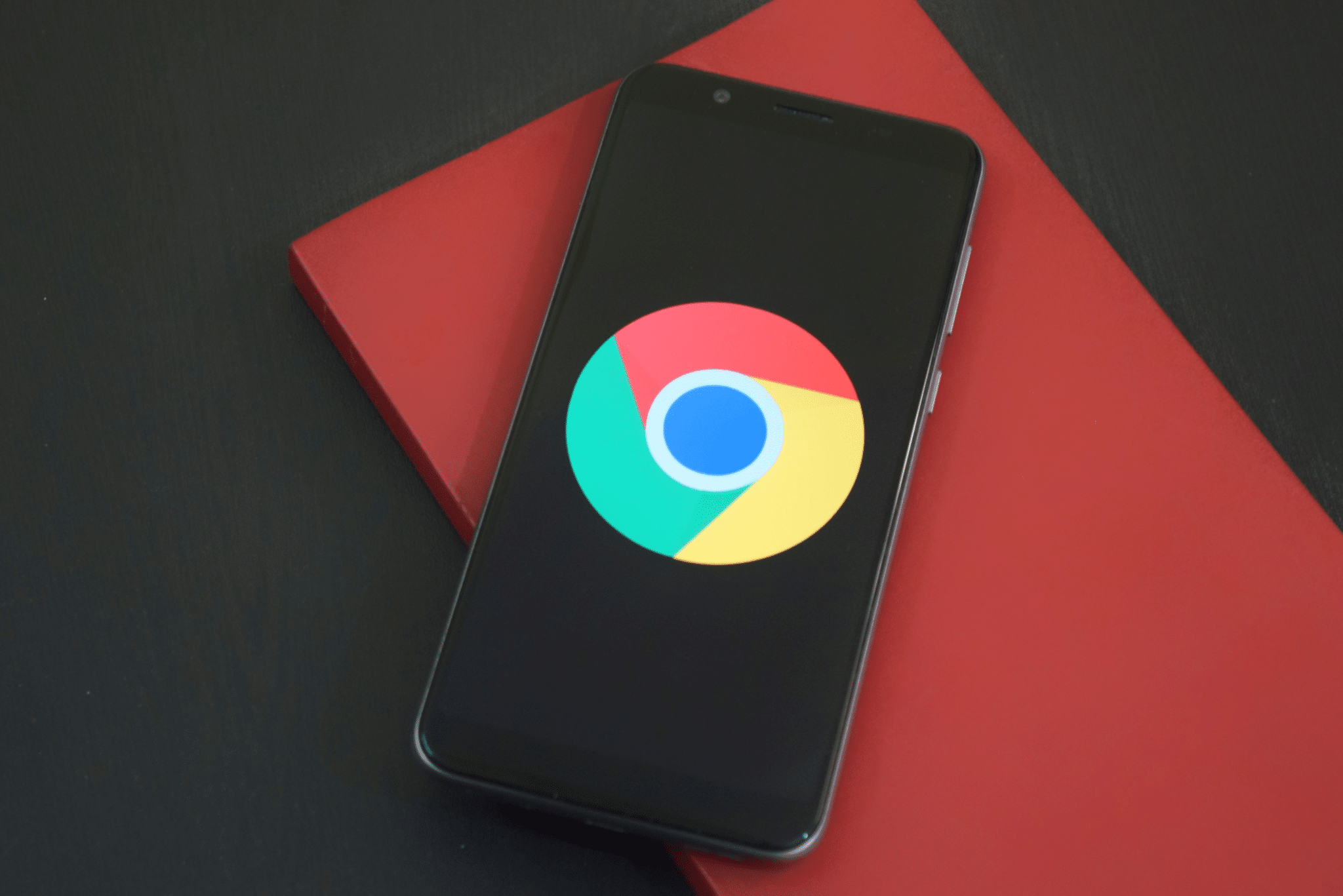
In today’s digital age, most people access the internet through their mobile devices. As of 2023, more than 57% of all search traffic comes from smartphones.
A recent study has revealed that only 13% of all websites were able to retain their exact same position across mobile and desktop devices after Google updated its search algorithm by implementing mobile-first indexing for all websites. Thus showcasing the importance of getting your site’s mobile experience and search-engine-friendliness right.
After reading this you might ask yourself:
-
-
What is mobile-first indexing and how does it affect my website? or
-
-
-
Do I need to worry about mobile-first indexing to get better search traffic?
-
The short answer to this question is: Yes, you do need to worry about the overall mobile-friendliness of your website and yes mobile-first indexing directly affects your search traffic.
Here is everything you need to know about mobile-first indexing and how you can be on the winner’s side at the end of the day. In this blog post, we will discuss the importance of mobile-first indexing for NZ websites.
-
-
What is Mobile First Indexing
-
-
-
Importance of Mobile-First Indexing for NZ Websites
-
-
-
Best Practices to Follow for Mobile-First Indexing | Google Search Central
-
-
-
Has Your Website Switched to Google’s Mobile-First Indexing?
-
-
-
How Does Mobile-First Indexing Affect Your Website Ranking on Google?
-
-
-
Does Website Design Affect the Overall Mobile Friendliness of a Website?
-
What is Mobile First Indexing?
Mobile-first indexing is a practice implemented by Google where the mobile version of a website is used as the primary source for ranking and indexing a website. This means when Google crawls a site to collect data for its search index, it will use a smartphone crawler instead of a desktop crawler to get the mobile version of the content first. Getting the mobile version of a website first is called mobile-first indexing.
According to Google:
“Mobile-first indexing means Google predominantly uses the mobile version of the content for indexing and ranking.”
Back in 2016, Google first announced that they were changing their search algorithm to improve the search experience for mobile users in an announcement that said:
“Today, most people are searching on Google using a mobile device. However, our ranking systems still typically look at the desktop version of a page’s content to evaluate its relevance to the user. This can cause issues when the mobile page has less content than the desktop page because our algorithms are not evaluating the actual page that is seen by a mobile searcher.”
The shift to mobile-first indexing reflects the growing trend of internet users accessing websites from mobile devices over desktops. As of August 2023, Google has now enabled mobile-first indexing by default for all new websites, whether they are new to the web or previously unknown to Google Search.
Importance of Mobile-First Indexing for NZ Websites
These practices are increasingly important as Google moves towards 100% mobile-first indexing, emphasising the need for websites to be optimised for mobile usage.
Improved User Experience
A mobile-first approach means prioritising the needs of mobile users over desktop users. With mobile-first indexing, Google bots crawl mobile versions of websites before they crawl desktop versions.
By doing so, Google is ensuring that users have access to a site that has been optimised for mobile devices, providing a better user experience. As a result, websites that follow a mobile-first approach often rank higher on Google SERPs.
Increased Organic Search Traffic
In New Zealand, mobile internet usage is increasing day by day. So if your website isn’t mobile-friendly, you risk losing out on a significant amount of traffic. As more and more people shift to mobile devices, having a mobile-first website is essential to remain relevant and competitive.
Mobile-optimised websites also load faster than desktop versions, leading to a better user experience and higher engagement. An improved user experience, in turn, leads to increased traffic and higher engagement rates.
Lower Bounce Rates
Bounce rates for your website increase when a user leaves without interacting with your website. A higher bounce rate indicates that there is something wrong with your web design, content, or the overall mobile-friendliness of your website.
Since mobile users typically have less time and patience than desktop users, they are even more likely to bounce if your content visibility is bad, the images are too wide, or the website is taking too long to load.
With mobile-first indexing, you can reduce bounce rates by providing mobile users with a site that is easy to navigate, easy to view, easy to interact with, loads quickly, and offers a seamless user experience.
A Future-Proof Website
Mobile-first indexing is not a trend or a passing phase. Mobile websites are a glimpse into the future of web design. As more people turn to mobile devices for browsing, search engines are placing greater emphasis on mobile-optimised sites.
If you want your website to remain relevant and competitive, you must embrace the mobile-first approach. By prioritising mobile users, you’ll equip your website with the tools it needs to succeed in the years to come.
Gaining a Competitive Advantage
As Google prioritises mobile-friendly sites, businesses with a strong mobile presence will have a competitive edge over those that don’t. By embracing mobile-first indexing, you can stay ahead of competitors who are slow to adapt.
Boost Local SEO
Mobile optimisation is particularly crucial for local SEO. Many people conduct local searches on their mobile devices, and Google often provides location-based results.
Therefore, a mobile-optimised website can help attract local customers and drive foot traffic to physical stores.
Enhanced Social Media Engagement
Most social media usage happens on mobile devices. If your website isn’t mobile-friendly, it can hinder the effectiveness of your social media marketing efforts, as any links back to your website might provide a poor user experience.
Best Practices to Follow for Mobile-First Indexing | Google Search Central

Keeping up with Google’s ever-evolving algorithms is crucial for maintaining a competitive edge. One such significant shift is the transition to mobile-first indexing, this change has compelled businesses to rethink their SEO strategies, prioritising mobile-friendly websites.
Here are the 11 best practices you should follow for mobile-first indexing, ensuring your website not only meets Google’s standards but also provides an optimal user experience for your mobile audience:
-
-
Use a Responsive Web Design: This ensures your website is properly displayed across various devices, which is one of the best practices for mobile-first indexing
-
-
-
Use Separate Mobile and Desktop versions of Your Website (if required): While having a responsive site is ideal, it is not the only option for mobile-first indexing. You can have a separate mobile URL (m.example.com) for your mobile website. This way you can have a perfect desktop version of your website while also having a perfect mobile version of your website.
-
-
-
Content Consistency: Ensure that your mobile and desktop versions have the same content to provide a seamless user experience.
-
-
-
Importance of Headings: Proper use of headings improves readability and SEO on mobile devices.
-
-
-
Alt Text: Always use alt text for images to help Google understand the content of your visuals which is essential for mobile indexing.
-
-
-
Placement of Ads: Ad placement should not interfere with content accessibility on mobile devices.
-
-
-
Robots Meta Tags: These tags give instructions to web robots about how to index and crawl pages on their websites.
-
-
-
Error Page Status: Make sure the error page status is the same on both mobile and desktop sites
-
-
-
Invisible parts of the page: Avoid using methods that hide parts of the page (robot.txt) as they can impact mobile indexing.
-
-
-
Analyse Google Crawling and Errors: Regularly check Google Search Console for any crawl errors or issues that could affect your mobile site’s indexing
-
-
-
Page Speed: A faster page load speed improves user experience and is a ranking factor for mobile-first indexing.
-
Has Your Website Switched to Google’s Mobile-First Indexing?

Checking if your website is mobile-friendly is a straightforward process with several online tools available to aid you. Google’s Mobile-Friendly Test allows you to simply enter your website’s URL and it will analyse how well your page performs on mobile devices. Google’s mobile-friendly test can also work on mobile search engines.
How To Check if My Website is Mobile Friendly or Not Without Using any Tools?
Alternatively, you can use your own browser to check the mobile responsiveness of your site. This can be done by resizing your browser window to mimic different screen sizes or using the device emulation feature in the developer tools of most modern browsers.
Note: Having a mobile-friendly website is not just about shrinking your site to fit on a smaller screen. It should also include considerations for touch controls, load times, and ensuring that all features and content are accessible and functional on mobile devices.
How Does Mobile-First Indexing Affect Your Website Ranking on Google?
Mobile-first indexing significantly impacts your website’s traffic on Google though it’s not a direct ranking factor but an indirect ranking factor (more on that later in the post). It primarily uses the mobile version of your site’s content for indexing and ranking, making it a vital aspect to consider in SEO strategies. This shift means Google’s algorithms prioritise the content from your mobile site when determining your rankings.
However, it’s important to note that mobile-first indexing is about how Google gathers content, not necessarily how it ranks it. Despite this, it still has a direct influence on your website’s organic traffic flow and overall visibility. The mobile version of your site is now considered the primary version for determining rankings.
This change can lead to fluctuations in keyword rankings on Google Search Console, positively or negatively affecting your organic traffic. Therefore, understanding and adapting to mobile-first indexing is key to maintaining and enhancing your site’s SEO performance. You can also have a separate desktop and mobile site. If you don’t your desktop site must have a responsive web design.
Does Website Design Affect the Overall Mobile Friendliness of a Website?

Yes, your website plays a significant role in its mobile-friendliness, affecting user experience, engagement, search rankings, and business metrics like sales and conversions.. Here are some key points to consider:
-
-
Responsive Design: A responsive web design automatically adjusts the layout based on the device’s screen size, image size, and scripting abilities. This is crucial for creating a mobile-friendly website.
-
-
-
Better User Experience: A mobile design with a responsive layout, appealing visuals, engaging content, and a well-thought flow of content will boost your site’s user experience. Better user experience often leads to higher engagement and conversion rates.
-
-
-
SEO Friendliness: Mobile-friendly websites have a positive impact on your overall Google ranking. In recent years, mobile-friendliness has become an increasingly important factor in search engine optimisation (SEO).
-
-
-
Sales and Conversions: Mobile-friendly websites can boost your sales and conversions due to ease of accessibility.
-
Get your business a mobile-friendly website in New Zealand

Are you in search of a website tailored to the myriad of smartphone users worldwide? Look no further. At DB IT, we specialise in crafting website designs that prioritise accessibility for all smartphone users, ensuring a seamless mobile experience.
With the creation of your website, we follow Google’s mobile-first indexing best practices. This foresight not only enhances the user experience but also saves you from potential redesigns in the future.
For years, we’ve assisted business owners throughout New Zealand in achieving their online goals. Browse our extensive portfolio of mobile-friendly website designs to see the innovative solutions we’ve delivered to our clients, and you’ll understand why DB IT is the right choice for your next website.
Conclusion
Mobile-first indexing is no longer a choice but a necessity for New Zealand website owners and web designers. With the increasing usage of mobile devices, it’s crucial to prioritise the needs of mobile users over desktop users.
A mobile-first approach helps in providing a better user experience, increasing traffic, and reducing bounce rates. Also, it future-proofs your website against the changing digital landscape, making it more relevant and competitive. By understanding the importance of mobile-first indexing, you can ensure that your website remains discoverable and engaging to users across all devices.
